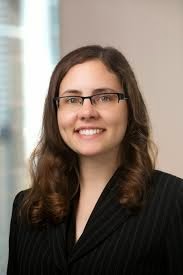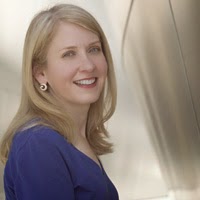Earlier this summer a website published a list of the hottest Libertarian men, and the hottest libertarian women. Both lists contained no people of color and no people from outside the United States. The women’s list had no one over 35. Additionally, both lists, especially the men’s list, had nice people, smart people, cute people…but were a little low on HOT people.
Austin Peterson was the publisher. I’m older than he is; I’ve actually dated both genders, which he may not have. As Reagan said of Carter, we will forgive him his youth and inexperience.
I’m expanding the number to 29, for two reasons. One is a bow to libertarian nerditude – 29 is a prime number. Another is that as a prime number, 29 represents integrity, wholeness, and individualism — these people can’t be reduced to a sum of their parts or demographics. It’s my own libertarian cultural appropriation of Kabbalah numerology or Pythogorean metaphysics.
Here is my correction. (If you were on Austin’s list you are ineligible for this one; you are also ineligible if you are one of my drinking or brunch pals who I see more than once a month. Many people in one or both of those groups could be on this list otherwise, of course.)
Since there are obviously so many, many, many hot libertarians, we are planning to do lists of hot couples, hot gays and lesbians, etc. etc., and new Winter 2014 hot men’s and women’s lists around December 15 – the Birthday of the Bill of Rights.
***************************************************************************
#1 Emily Ekins

(As a gorgeous, blond and American libertarian woman, it is shocking that Ms. Ekins was left off the other list, which featured heavily the notable gorgeous blond American libertarian women.)
Ekins is the director of polling for Reason Foundation where she leads the Reason-Rupe public opinion research project, launched in 2011. Emily’s research focuses on public attitudes toward government, public policy, and how individuals make trade-offs with an emphasis on quantitative analysis. She is an active member of the American Association for Public Opinion Research (AAPOR) and the American Political Science Association (APSA). Emily is also working on her PhD thesis in political science at the University of California, Los Angeles. Emily’s professional experience includes quantitative analyses of the Tea Party movement for the Cato Institute, and conducting survey analyses and case writing for Dr. Peter Tufano at the Harvard Business School. She has discussed her research on Fox News, Fox Business, CNBC, The Blaze, and her research has appeared in The Washington Post, Politico, The Wall Street Journal, and The Washington Times.
***************************************************************************
#2 Dambisa Moyo
Dr. Dambisa Moyo was awarded the Hayek Lifetime Achievement Award, named for the Nobel Prize winner and recipient of the Presidential Medal of Freedom, Friedrich Hayek. Moyo was named by TIME Magazine as one of the world’s 100 most influential people.[11]
***************************************************************************
#3 Tanuja Paruchuri
Ms. Paruchuri, formerly of the DC metro area, is a diet and wellness entrepreneur and a Texas Libertarian Party candidate for U.S. Senate.
**************************************************************************
#4 Willette Murphy Klausner
WILLETTE KLAUSNER is president/owner of Edgework Productions and WMK Productions. Ms. Klausner has produced Three Mo’ Tenors since 2001. Ms Klausner is a co-producer ofRomeo and Juliet on Broadway starring Orlando Bloom and Condola Rashad and is a co-producer of the recent Broadway production of The Trip to Bountiful with Cicely Tyson, Cuba Gooding Jr., Vanessa Williams and Condola Rashad as well as co-producer of The Mountain Top starring Angela Bassett and Samuel Jackson. Ms. Klausner is married to Reason Foundation founder Manuel S. Klausner. They share a passion for food and wine and are co-founding members of the American Institute of Wine and Food.
**************************************************************************
#5 Anne Hathaway
A fantastic actress in movies for young or old, Ms. Hathaway counts Ayn Rand as one of her favorite novelists.
Perhaps she and actor Joe Manganeillo can someday do a really good version of Atlas Shrugged together?
***************************************************************************
#6 Joanna Andreasson
Ms. Andreasson does graphic design for clients including the Mercatus Center and reason magazine.
***************************************************************************
#7 Stephanie Rugolo
Blogger and policy analyst Stephanie Rugolo is leaving the CATO Institute for an Arizona think tank. You can follow her at The Rugolo Report blog, which she writes with her brother.
***************************************************************************
#8 J. Buzz Webb
J. Buzz Webb is the founder of The Big Gay Dance Party at PorcFest, New England’s annual summer libertarian festival.
She’d make a hot gay guy, and she’s a hot butch gay woman.
Straight guys may not get her kevorka. I think most women – gay, bi, and straight (and some lesbians trapped in a male body) – do.
(Full disclosure: Buzz has kissed me on the cheek.)
***************************************************************************
#9 Amanda Anderson
Ms. Anderson is director of events at the Leadership Institute. My Judd Weiss photo is pretty good; this one does not really capture her good looks fully.
***************************************************************************
#10 Samantha Dezur
It’s official. Ms. Dezur, a Hill lobbyist, once was in The Hill‘s list of 50 most beautiful Hill staffers.
**************************************************************************
#11 Joanna Robinson
Who can resist a gal in riding gear? (But where is her crop?)
She also owns a chain of massage spas. Unfortunately, she is taken!
Ms. Robinson is on the board of directors of America’s Future Foundation, and brings debates and lectures to D.C. and other cities.
***************************************************************************
#12 Marianne Rodriguez
A Hillsdale College graduate, she looks like this and she is always so nice! Ms. Rodriguez works with the America’s Future Foundation, bringing debates and lectures to people in D.C.
***************************************************************************
#13 Sara Scarlett
Born in Dubai, living in London, Ms. Scarlett, a former CATO intern, identifies as a voluntaryist.
*****************************************************************************
#14 Katie Hooks
Ms. Hooks is director of digital media at reason magazine.
She has a compelling edgy energy. And a really hot boyfriend (not pictured here).
******************************************************************************
#15 Virginia Postrel
Virginia Postrel is a contributing editor for The Atlantic and the author of The Substance of Style and The Future and Its Enemies. She writes the weblog Dynamist.com as well as a monthly column on “Commerce & Culture” for The Atlantic and regular columns forForbes. For six years she has been an economics columnist for The New York Timesbusiness section. Previously, she was the editor and associate editor of Reasonmagazine. She also founded Reason Online, the magazine’s website. She has been a media fellow at the Hoover Institution at Stanford University and a reporter for Inc. andThe Wall Street Journal.
******************************************************************************
#16 Christa Markwalder
According to Politico: Christa Markwalder: This Switzerland liberal is actually a centrist, since Switzerland liberals are actually Libertarians.
***************************************************************************
#17 Astrid Sarvis
Dr. Astrid Sarvis is a pediatric fellow in Washington, D.C. and the wife of Libertarian U.S. Senate candidate Robert Sarvis. She campaigned actively for his 2013 Virginia gubernatorial race, where he won an unprecedented 7% of the vote as a Libertarian candidate.
**************************************************************************
#18 Shikha Sood Dalmia
Our question for reason and Forbes writer Shikha Sood Dalmia is: when are you writing a book?
**************************************************************************
#19 Moira Bagley
Former communications director for Senator Rand Paul, Ms. Bagley recently married a FreedomWorks staffer and bought a nest on East Capitol Street.
******************************************************************************
#20 Angela Keaton
AntiWar.com fundraiser Angela Keaton is the immediate past chair of OutRight Libertarians.
******************************************************************************
#21 Camille Paglia
Where there is that much energy there must be heat. It’s a law of physics. I’d love to lock her in a room with Michael Moynihan and force him to interview her.
Why isn’t she on RedEye?
*****************************************************************************
#22 Abby McCloskey
Abby M. McCloskey is the program director of economic policy at the American Enterprise Institute (AEI) where she disseminates the work of AEI’s economic policy team. McCloskey also studies and writes about various financial services policy issues. Immediately before joining AEI, McCloskey was director of research at the Financial Services Roundtable where she worked on financial regulatory reform, including Dodd-Frank and Basel III. McCloskey has also worked for the Mercatus Center. While at Mercatus, she created and hosted a video series on financial markets issues.
*******************************************************************************
#23 Michelle Minton
Ms. Minton is a fellow at the Competitive Enterprise Institute and runs Human Achievement Happy Hour every year.
*******************************************************************************
#24 Roxanne J. Alvarez
*******************************************************************************
#25 Veronique Pham Singh
New mom Veronique Pham Singh works in cybersecurity.
*******************************************************************************
#26 Hadley Heath Manning
Ms. Heath is a policy Analyst at Independent Women’s Forum
*******************************************************************************
#27 Amanda Billyrock
Ms. Billyrock speaks at many libertarian events.
*******************************************************************************
#28 Naomi Brockwell
*******************************************************************************
#29 Magatte Wade
 This serial entrepreneur who raised $7 million to grow her first business and who Forbes magazine called one of the 20 youngest power women in Africa, was a recent speaker at Students for Liberty’s international conference.
This serial entrepreneur who raised $7 million to grow her first business and who Forbes magazine called one of the 20 youngest power women in Africa, was a recent speaker at Students for Liberty’s international conference.
*******************************************************************************************************************************































































